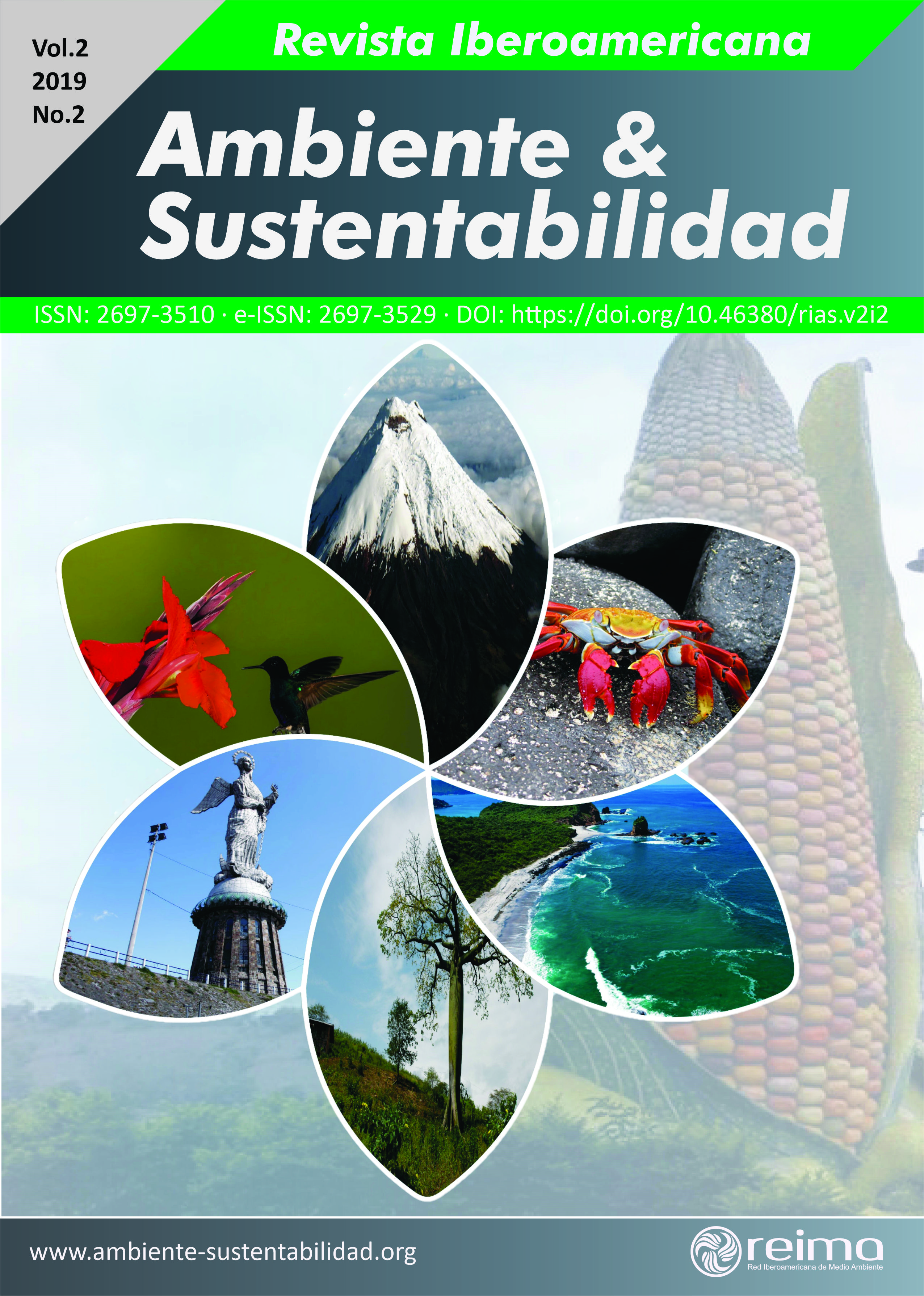The ecological footprint, indicator of the social and environmental responsibility of cara until 2030.
DOI:
https://doi.org/10.46380/rias.v2i2.44Keywords:
environmen, sustainability indicator, sustainable developmentAbstract
In order to achieve the Sustainable Development Goal for 2030, which proposes guaranteeing sustainable consumption and production modalities, the role that universities must assume as an education and environmental management manager is essential. The Ecological Footprint is a biophysical indicator that integrates the set of impacts that the community exerts on its environment, measured in terms of appropriation of ecosystems, which considers both the necessary resources and the waste generated to sustain said community. The present work arises with the objective of communicating to the university community of the Metropolitan University of Ecuador, the result of the ecological footprint focused on a single case study. The calculation tool available on the website of the Ministry of Environment of Ecuador was used, and an ecological footprint of 2.87 global hectares (hag) was obtained that exceeds the value of this indicator for the case of this country. This means that the assumed life style exceeds the limits of the planet and shows a conflicto between the consumption model and environmental sustainability. Finally, some corrective measures are exposed to reduce the ecological footprint in order to contribute to sustainable development.
Downloads
Metrics
References
Aliaga, M. E. (2014). Determinación de la Huella Ecológica personal como estrategia para la adquisición de patrones de consumo sostenible UNCP. Saber y Hacer. Revista de Ingeniería de la USIL, 3(1), 49-69.
El 28 de octubre Ecuador gastará todos sus recursos ecológicos de 2018. (2018). Diario El Universo. https://cutt.ly/gfczhbb
Global Footprint Network. (junio de 2018). Infographics. https://cutt.ly/ofczjlt
Larrán, M. y Andrade, F. (2015). Análisis de la responsabilidad social universitaria desde diferentes enfoques teóricos. Revista Iberoamericana de Educación Superior, VI (15), 91-107. https://bit.ly/2LQEMDd
López, E. y García de Chenea, B. (2015). Análisis de riesgos para la reserva ecológica de América Latina y el Caribe. Ciencia y Tecnología, (15), 97-112. https://doi.org/10.18682/cyt.v1i15.292
Martínez, R. (2007). Algunos aspectos de la huella ecológica. InterSedes: Revista de las Sedes Regionales, VII (14), 11-25. https://bit.ly/2ytb83P
Ministerio del Ambiente de Ecuador. (2017). Boletín Nro. 1. Huella Ecológica del Ecuador. Principales avances y resultados (1ra Ed.). https://bit.ly/2WVEelG
Ministerio del Ambiente de Ecuador. (junio de 2019). Ecuación del Medio Ambiente. http://www.ambiente.gob.ec/ecuacion-del-medio-ambiente
Naciones Unidas. (2015). Agenda 2030 para el desarrollo sostenible. https://cutt.ly/pfczlip
Organización de las Naciones Unidas para la Alimentación y la Agricultura. (2017). El futuro de la alimentación y la agricultura: tendencias y desafíos. https://cutt.ly/6fczl6s
Panel Intergubernamental del Cambio Climático. (2007). Cambio climático: Informe de síntesis. Contribución de los Grupos de trabajo I, II, III al Cuatro Informe de evaluación del Grupo intergubernamental de Expertos sobre Cambio Climático [Equipo de redacción principal: Pachauri, R.K. y Reisinger, A. (Eds).
Pérez, D., Marcos, O. y Álvarez, P. (2015). La huella ecológica de las naciones. Revista Ciencia UNEMI, 8(14), 93-103. https://bit.ly/2ZwFBcr
Rees, W. y Wakernagel, M. (1996). Our Ecological Foot-print: Reducing Human Impact on the Earth. New Society Publishing.
World Wildlife Fund. (2014). Informe planeta vivo 2014. https://bit.ly/3ghdrYL
World Wildlife Fund. (2018). Living Planet Report - 2018: Aiming Higher. https://bit.ly/2LSU7Dl
Downloads
Published
How to Cite
Issue
Section
License
Copyright (c) 2019 Luz María Contreras Velázquez, Lisbet Guillén Pérez, Alleyne Formoso Mieres

This work is licensed under a Creative Commons Attribution-NonCommercial-ShareAlike 4.0 International License.
This work is licensed under a Creative Commons Attribution-NonCommercial-ShareAlike 4.0 International License (CC BY-NC-SA 4.0)
© This license allows users to distribute, remix, adapt, and build upon the material in any medium or format, provided that attribution is granted to the creator.














